Series Manufactured Krab Howitzers for the Polish Military
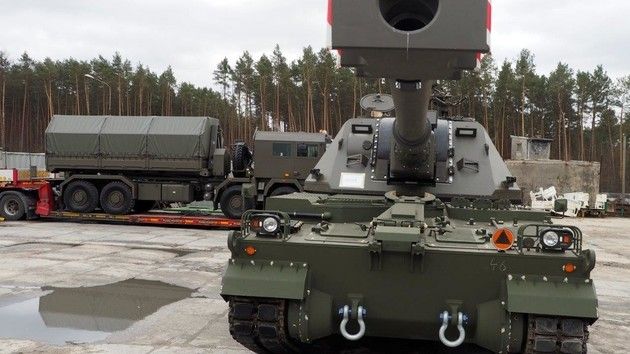
HSW has begun deliveries of the first series manufactured Regina DMO squadron level fire module, utilizing the Krab sphs. The above means that the Polish military is receiving equipment that has been acquired within the framework of the most significant Polish defence contract ever signed. The agreement in question was concluded back in 2016.
On Saturday, 16th March, another convoy with a batch of equipment left the HSW S.A. facility. Delivery of the equipment for the first series manufactured Regina module has begun. Agreement concerning this delivery was signed on 14th December 2016 and has a gross value of PLN 4.649 billion. The provisions of the agreement assume that, by 2024, four DMO squadron level fire modules would be delivered. Each of the elements listed above comprises of 24 155 mm Krab sphs and 19 auxiliary vehicles.
Conclusion of the aforesaid contract is a result of successful completion of preliminary introduction of this system into the inventory of the Polish military. Ultimately, the Regina modules are to replace the obsolete 122 mm 2S1 Gvozdika howitzers. Gvozdika platform was also being manufactured at HSW. Between 1984 and 1993 the facility delivered almost 550 systems as such to the Polish military. Gvozdika, despite the implemented upgrades, is not compliant with the NATO standards, within the scope of its calibre, combat effectiveness and, primarily, within the scope of its range - 15 km. For the sake of comparison, one should note that Krab sph, utilizing the standard 155 mm NATO rounds (JoBMoU-compliant ammunition / Joint Ballistic Memorandum of Understanding), has a range of more than 40 kilometres.
Czytaj też: “Gvozdika” - A Birthday Monument For HSW
Ever since the AS90 turret license agreement has been signed in 1999 (52-calibre length barrel) the Krab programme suffered from numerous technical and financial obstacles. Ultimately it was launched in 2014, following a decision, made jointly by the Polish Ministry of Defence, PGZ Group and HSW, to introduce licence manufacturing of a new, prospective Korean base platform. It was in December 2014 when a contract was signed to procure a batch of readymade polonized derivative of the Korean K9 Thunder platforms. Alongside those platforms, rights to license manufacture the vehicle to meet the demand created by the Polish military have been acquired. Furthermore, the HSW facility is also entitled to manufacture the chassis and derived products for export purposes.
Joint effort undertaken by a Polish-Korean engineering team made it possible to develop a polonized variant of the K9 platform, over the course of a few months. The main differences between the Polish version and its prerequisite include a number of modern solutions that are missing in case of the latter, namely an APU, fire extinguishing and explosion protection systems, or a Polish ventilation/air filtering system. Back in August 2015 Krab howitzer based on a new platform was rolled out at HSW and then premiered during the MSPO defence industry exhibition in Kielce.
After the handing off test procedures came to an end, Krab underwent its type certification procedure. Following the completion of the process above (April 2016) it was confirmed that the system is fully compliant with the requirements set by the Polish Ministry of Defence. Following the formalities related to settlement of the test programme it became possible to negotiate a manufacturing contract. First, HSW and Polish Ministry of Defence arranged the delivery programme with regards to all of the components expected to form the first introductory Regina DMO.
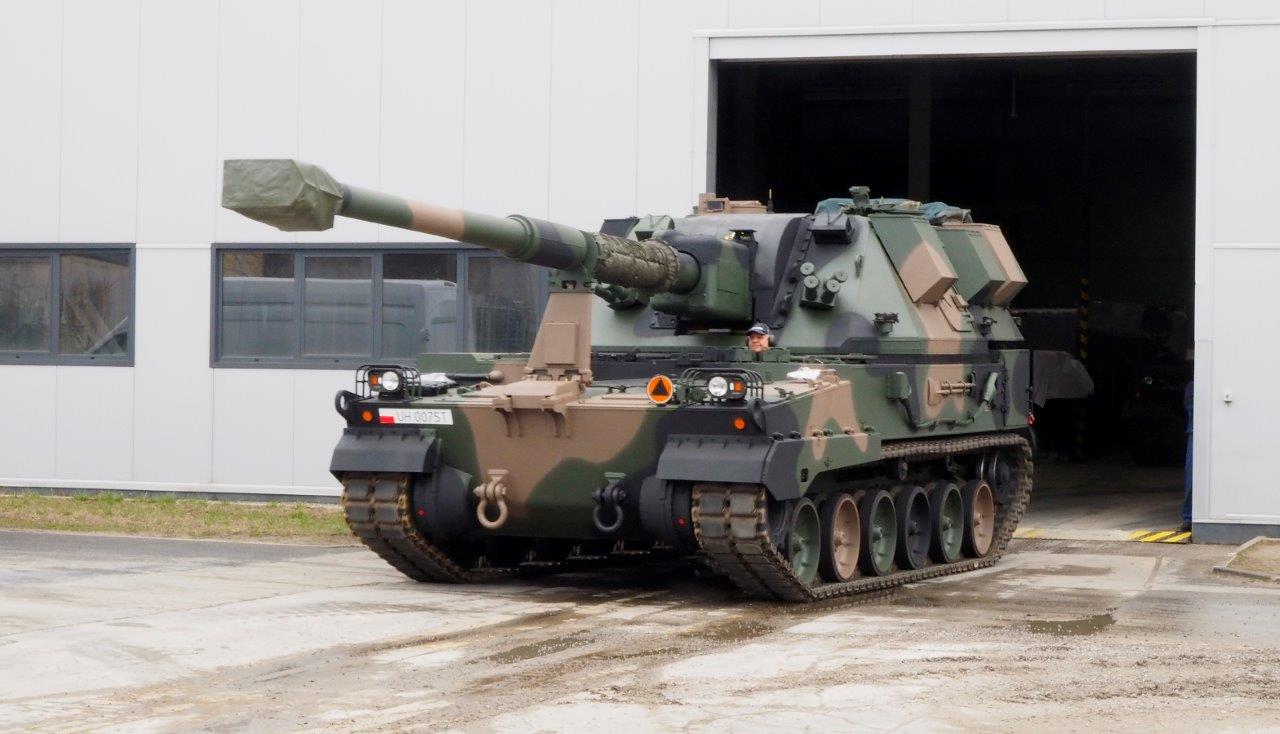
The first batch of 9 howitzers belonging to the introductory DMO element was handed off in mid-November 2016. Further examples were being delivered, in an ongoing manner, as they passed the handing-off test procedures. Officially the delivery of the “introductory” DMO Regina element was completed in July 2017.
Negotiation had begun long before that, in November 2016, with an agreement following the aforesaid process on 14th December, concerning the delivery of four series manufactured Regina modules - 96 Krab howitzers in total, accompanied by 12 staff/command (WDSz) vehicles, 32 command (WD) vehicles operated at a range of levels (both platforms based on the LPG vehicle manufactured at HSW S.A.) and 24 ammunition carriers (WA). The set above has been complemented with 4 armament/electronics repair vehicles (WRUiE). Ammunition carriers and repair vehicles have been based on Jelcz chassis. Three DMO modules covered by the aforesaid contract are to be delivered by the year 2022. The last one, the acquisition of which is optional, is to be acquired between 2022 and 2024.
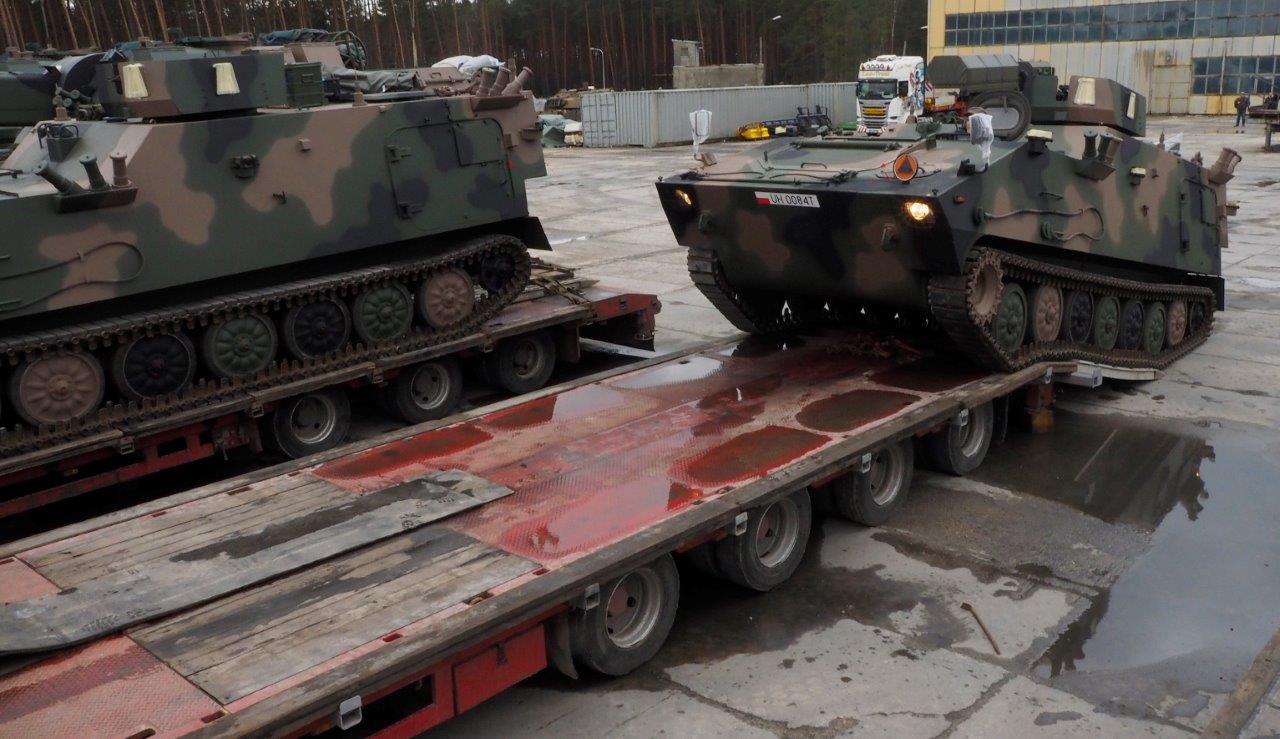
According to the arrangements made between the MoD and PGZ a slightly modified production and introduction schedule was adopted, with regards to the Polish military’s Regina modules. It was assumed that to the introductory DMO element would use readymade PK9/K9PL platforms delivered by the licensor and HSW S.A.’s partner, the Hanwha Techwin company (formerly: Samsung Techwin). It was also assumed that some K9 platforms that would be used as a base for Krab, in case of a certain portion of the series-manufactured DMO modules, would also be delivered from Korea. The remaining ones were delivered in a disassembled state, with the assembly stage expected to be completed at HSW. The above made it possible to train the Polish employees (with involvement of the Hanwha Techwin experts) at the HSW facility.
At the same time, the above provided the company with a greater safety margin associated with this convoluted and major investment (value exceeding PLN 40 million). The investment made it possible for HSW S.A. to create its own technical, process and personnel potential, required to manufacture modern tracked platforms in Poland, with simultaneous reduction of the cooperation-related imports. The import has been limited solely to the components that cannot be or are unaffordable to be manufactured domestically.
When it comes to establishment of potential related to the agreement signed in 2016, HSW only completed the expansion and upgrades of its barrel-manufacturing facility. This came with a pricetag of more than PLN 30 million. HSW also completed another investment, namely the company has erected a new 3.500 sq. m. production hall. The facility features robotized welding stations that are used to manufacture PK9/K9PL hulls and a unique large-volume defectoscopy X-Ray chamber, used for the purpose of controlling the welding process. HSW S.A. also had to create a parts/components supply chain with regards to the Krab howitzer. The company was forced to find subcontractors who would be able to deliver some of the elements.
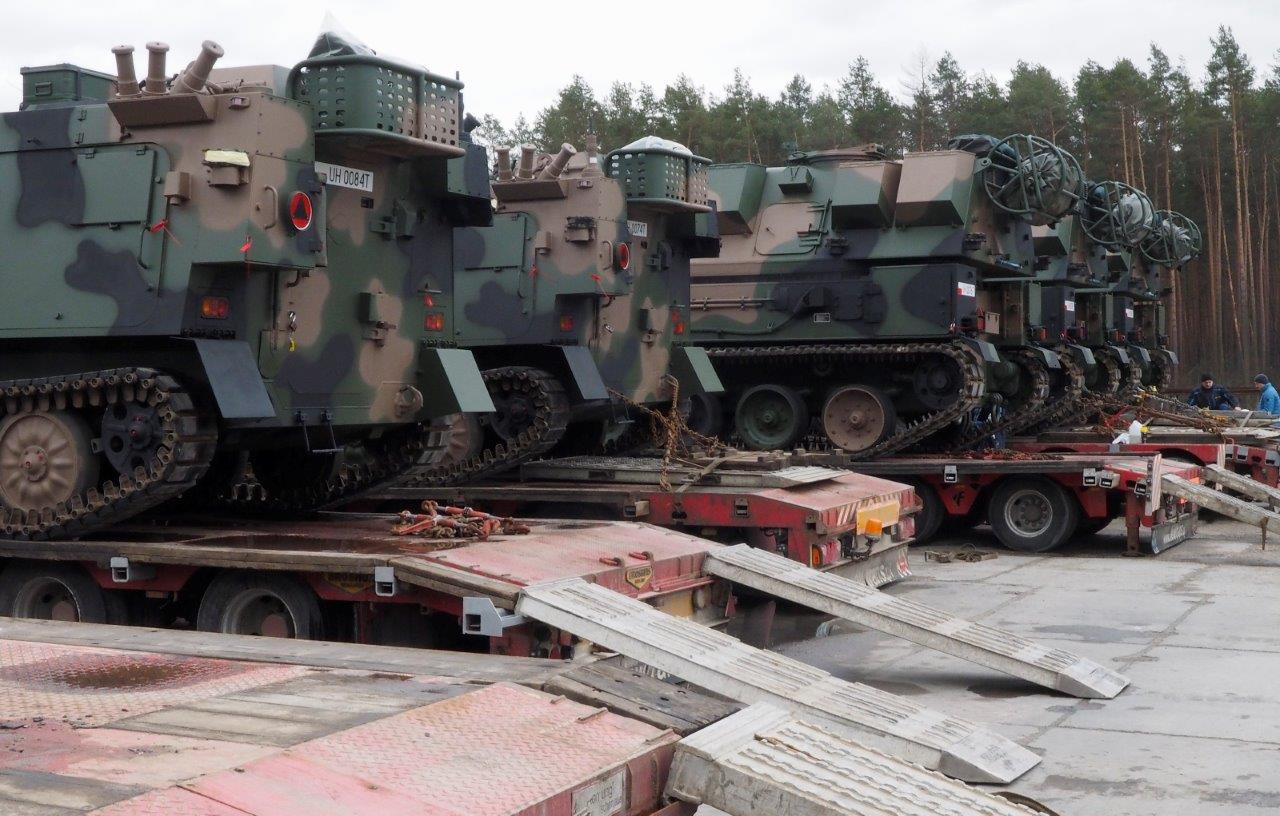
At the same time, during the construction works and during the period throughout which the welding robots were being delivered, the new production facility owned by HSW was being used to design and create equipment required to manufacture the chassis hulls. Upon reception of the welding robots, test welding operations began, with regards to the K9 chassis elements. Notably, considering the size of those elements made out of armoured steel, the production tolerances along the whole welding line are very strict. This includes the temperature for instance that needs to be kept within a very narrow range. Thus, an expansive and accurate AC system is an important element of the facility.
In March set up and launch of the last process line took place. Here we are referring to a modern machining system designed for the purpose of working on the vehicle hulls. The Union 1600 system mentioned here will offer capabilities beyond those that remain at disposals of systems as such destined for the purpose of manufacturing Rak and Krab turrets and WD/WDSz vehicle hulls. A few years ago this system has been unique all around Poland. Ultimately it will also make it possible to manufacture the Borsuk IFV hulls. It is going to be complemented with a new test pool facility that is the last element of the Borsuk IFV production line. It is going to replace its predecessor, dating back to the 1980s. Back then it was being used in mass manufacturing of the MT-LB system and Gvozdika sphs.
Following the 11th “Mazurski” Artillery Regiment based in Węgorzewo subordinated to the 16th “Pomorska” Kazimierz Jagiellonczyk Mechanized Division (operating the first Regina module) 5th “Lubuski” Artillery Regiment based in Sulechów, subordinated to the 12th “Szczecińska” Bolesław Krzywousty Mechanized Division is going to be equipped with the system in question.
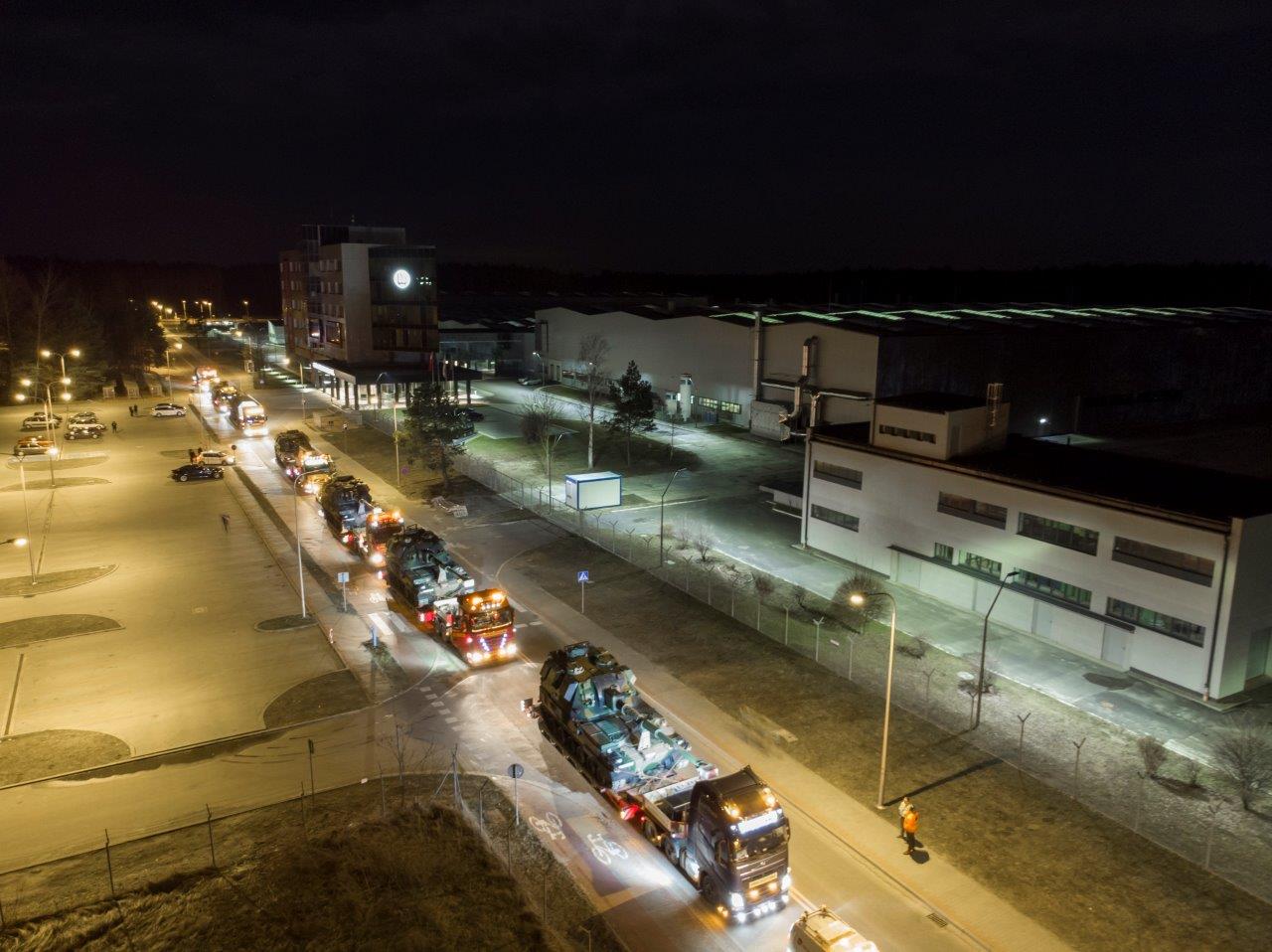
HSW, after carrying out the contract-defined training and following the schedule defined by the Polish Ministry of Defence was ready to deliver the first battery (8 howitzers, 4 command/staff command vehicles, 2 WA ammunition carriers and 1 WRUiE repair vehicles) during the last quarter of 2018. Delivery of equipment for the remaining two batteries has been planned to happen in 2019 (16 sphs, 7 WDSz/WD vehicles and 4 WA platforms). The first portion of the schedule assumptions was not met, with the reasons placed beyond the scope of influence of the manufacturer. The delivery was delayed by a few weeks, physically beginning on 16th March.
Considering the high quantity of equipment, the transport operation has been divided so that it takes place over the course of two days, with more than 700 kilometers to be covered between Sulechów and Stalowa Wola. 4 Krab howitzers, 2 command vehicles and one ammunition carrier have been sent to the recipient on Saturday. The second batch of equipment was to be sent to Sulechów on 19th March. Another 4 Krab howitzers were prepared for that convoy, along with 2 WD/WDSz platforms, 1 ammunition carriers and one WRUiE platform.
General Directorate for National Roads and Motorways (GDDKiA) is going to have its say, when it comes to routing of the convoys. Not only are the transport platforms wider than the roads, they also weigh more than 70 tonnes. Transport operation as such needs to take bridge clearances and road capacities into account.
According to the contractual conditions, the transport service is rendered by the contractor - HSW S.A. - at his own cost, and with full liability assigned. The contractor makes use of services rendered by a specialist logistics company. This is a clarification for those who suggest that delegating operation as such to the military would create an interesting training opportunity for the military logisticians, when it comes to broadly understood rapid deployment of significant quantities of combat equipment across vast distances.
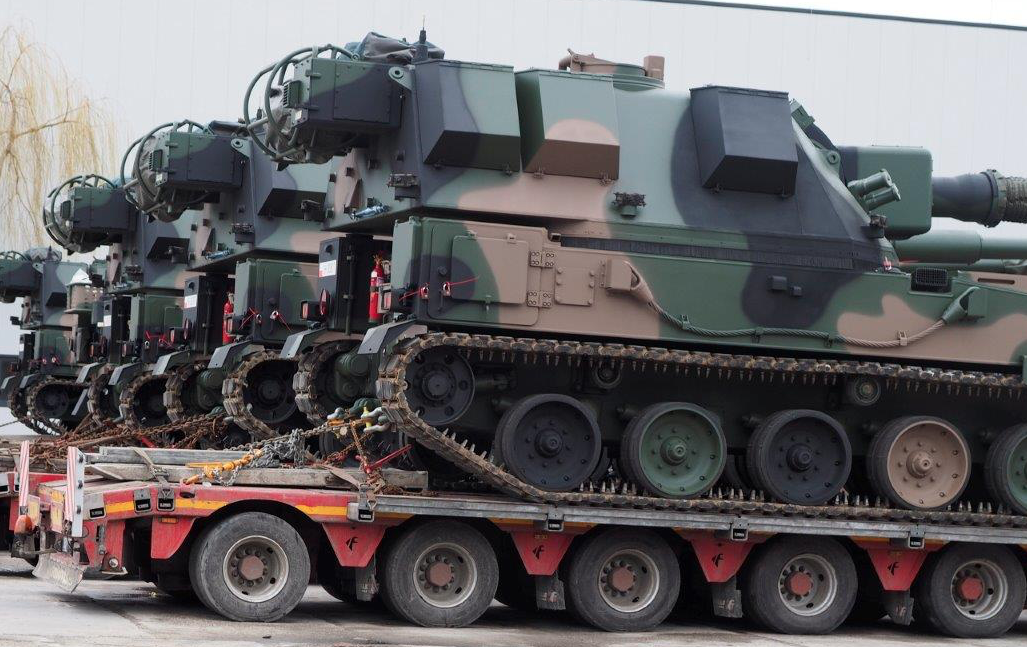
Once the elements of the DMO module are delivered, handing off procedure begins. As we have unofficially found out, formal handing off event has been planned to take place by the end of March. From that moment, on the equipment would become a part of the potential remaining at disposal of the Polish military. Delivery of equipment for the second Regina module battery for the 5th Artillery Regiment, with equipment set identical as in case of the March convoys, is to be organized during the summertime.
Poland will have one of the strongest artillery components at its disposal in the Middle-Eastern Europe. This will happen after the introduction of the first of the Krab batteries into the inventory of the 5th Regiment. Let us recall the fact that Poland already had 32 platforms as such at its disposal (40 since the summer and 48, once the deliveries are finalized for that unit). The above has a major impact on the NATO military potential in this region of the alliance’s AoR. Whether the quantity of artillery assets could be used to draw direct comparisons is debatable, separately from the strength of the military as a whole, or from the populations or territories, should the territory as such be perceived as the area of operations. However, it is worth to do so, as this depicts the combat capabilities and potential of the Armed Forces of all of the countries in the region - and this is one of the most important measurable variables on the battlefield.
Poland, as we all know, has numerous 122 and 152 mm self propelled artillery assets. Primarily though, Warsaw is currently procuring 120 examples of the 155 mm sphs. There is a realistic chance that this quantity may go up. Poland's neighbours, utilizing 155 mm artillery systems as well, have much less assets at their disposal. Lithuania has acquired 21 modernized second-hand PzH2000 howitzers from the Bundeswehr’s surplus. Meanwhile, Estonia concluded an agreement back in 2018, with an intention to procure 12 K9 Thunder systems. Latvia, on the other hand, decided to procure 47 second hand M109 A5Oe Paladin howitzers from Austria that, despite the upgrades they underwent between 2003 and 2007, are no match for the Krab sph’s performance. Meanwhile, Hungary decided to acquire 24 brand new PzH 2000 systems in late 2018. Croatia has acquired 12 PzH2000 howitzers in a manner somewhat reminiscent to the one we have witnessed in case of the Lithuanian procurement. Slovakia ordered 25 brand new 155 mm Zuzana 2 wheeled sphs, in the spring of 2018. Czech Republic is planning to acquire around 50 new 155 mm howitzers based on a platform supplied by Tatra.
23rd “Śląski” Artillery Regiment of the Polish military will be, meanwhile, another unit that would receive equipment in a form of the Regina DMO element. The unit in question is based n Bolesławiec and it is subordinated to the 11th “Jan III Sobieski” Armoured Cavalry Division. The aforesaid element is currently operating the 122 mm WR-40 Langusta, RM-70 and BM-21 rocket systems, along with 152 mm wz. 77 Dana howitzers. No information has been released when it comes to the operational assignment of the series manufactured no. 3 and no. 4 Regina systems.
Moreover, the Polish Ministry of Defence has not released information yet, pertaining to the plans that would envisage forming and development of the 18th Mechanized Division. Formation of that unit would entail procurements of Regina DMOs at a larger scale, extending beyond the quantities that have been the subject to the contract concluded back in 2016. The 18th Mechanized Division, that is expected to achieve operational readiness in 2026, is to include an artillery regiment. Plausibly, that regiment is going to be based around a Regina module and WR-40 Langusta or Langusta II rocket systems.
The way in which deliveries of the Regina system would continue, following the exhaustion of the current contract, remains unknown. The Strategic Defence Review of 2016 included a recommendation suggesting that Regina programme shall continue with a higher number of ordered DMO modules. The new Technical Modernization Plan covering the period between 2017 and 2026, signed by the head of the Polish Ministry of Defence on 28th February 2019, contains a provision suggesting that the Regina programme would continue. Procurement of further squadron-level modules is expected within the framework of the modernization plan. The plural form used here suggests that more than one DMO element would be procured, to meet the requirements of the 18th Division. The details remain unknown as for now.
Jerzy Reszczyński
